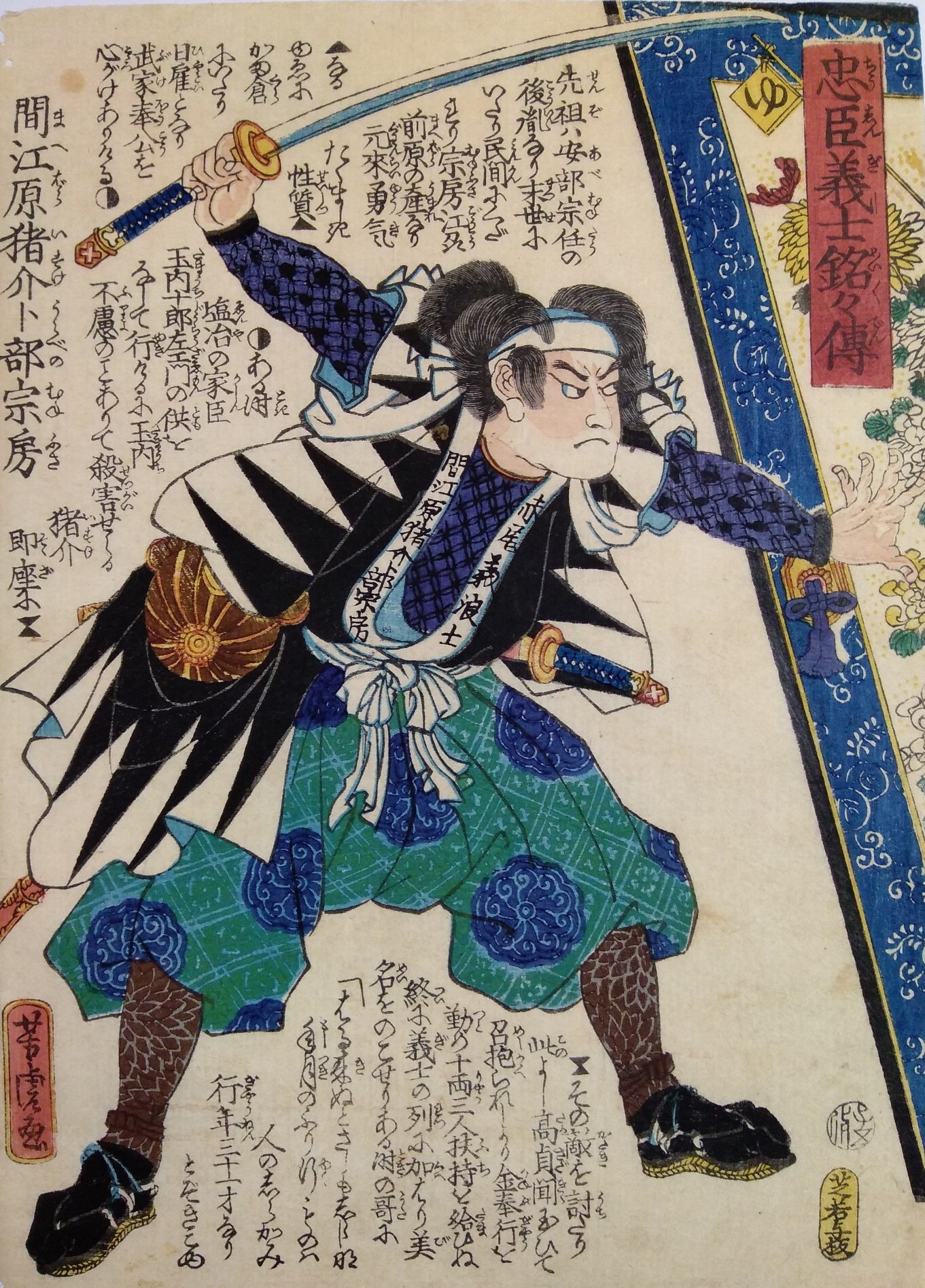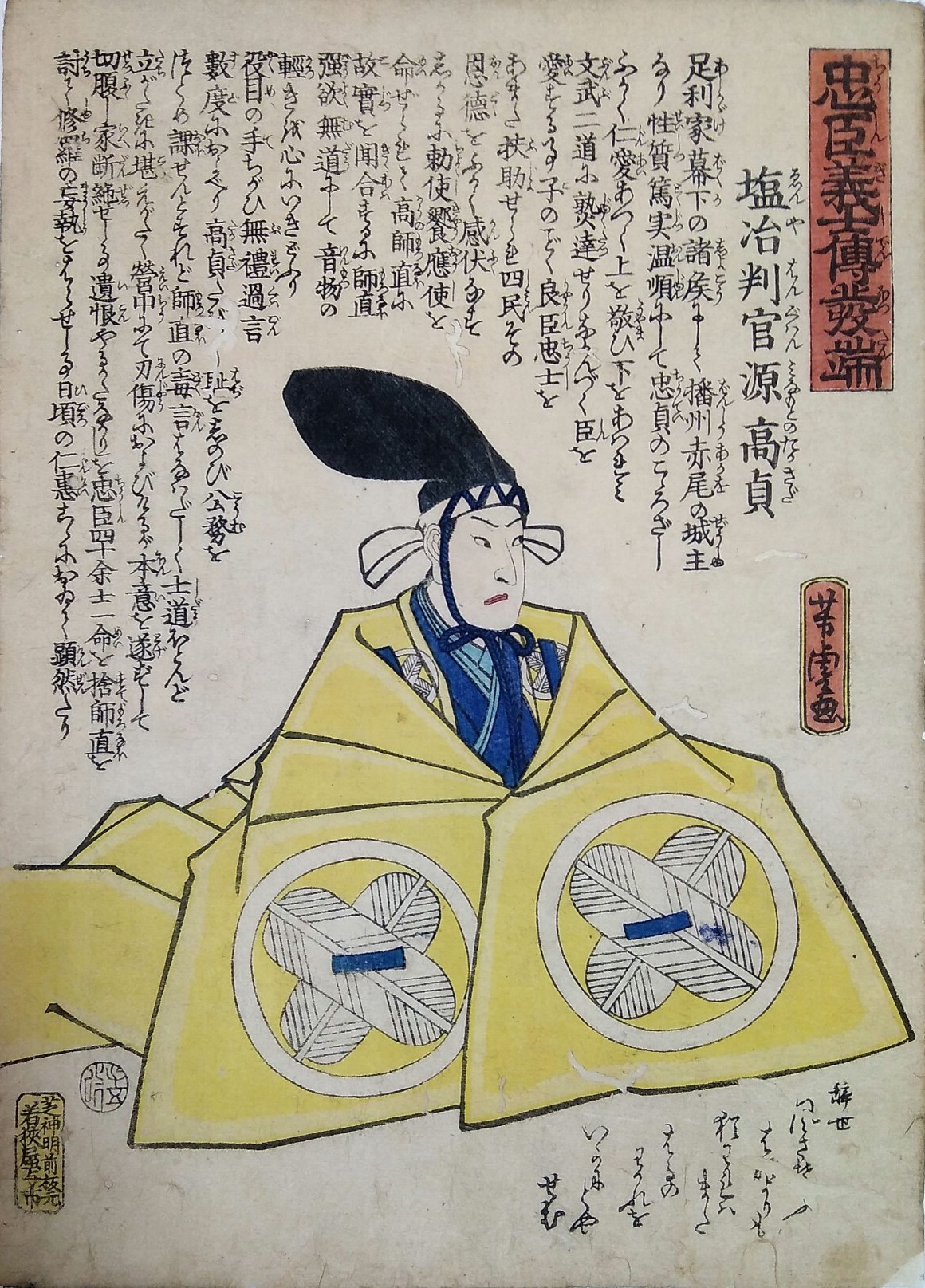Utagawa Yoshitora
Utagawa Yoshitora, an ukiyo-e artist active towards the end of the 19th century, was born in Edo. The exact dates of his birth and death are unknown.
Yoshitora was a pupil of Utagawa Kuniyoshi, but due to artistic and personal differences (including an incident where he was imprisoned for fifty days for producing a satirical print about Tokugawa Ieyasu) he left his mentor and adopted the
artist name Mosai.
During the Edo period, particularly after the Treaty of Kanagawa in 1854, Japan began to open its ports to foreign trade, culminating with the opening of the port of Yokohama in 1859. This event sparked great curiosity about Westerners, who
became the primary subjects of the Yokohama-e prints, a genre in which Yoshitora excelled. These works often depicted foreigners in unusual clothing and engaging in strange occupations, revealing Japan`s initial impressions of westerners.
In addition to Yokohama-e, Yoshitora produced prints of warriors, kabuki actors, beautiful women, and cityscapes, sometimes drawing inspiration from Western engravings for depictions of foreign scenes. His work remains a valuable document of
the era, showing how Japan perceived the outside world during the cultural opening of the Meiji period, which began in 1868.
Yoshitora also worked as an illustrator for newly founded newspapers during the Meiji era. Today, his works are part of celebrated collections such as those at the British Museum, the Philadelphia Museum of Art, and the Metropolitan Museum of Art.
 Sold Out
Sold Out
Maebara Isuke Urabe no Munefusa was one of the 47 loyal retainers of Asano Naganori which took part to the assault of Kira Yoshinaka`s mansion, killing him for avenging his Lord Asano.
Here he`s knocking down a door or Kira`s mansion, probably looking for him during the assault.
His real name was actually Maebara Isuke Munefusa, but being any reference to the original characters of the story prohibited and subject to censorship it was changed with a similar one.
Maebara was described as a gentle man of few words, skilled in martial arts and archery.
This series from Yoshitora doesn`t refers to each print using common numbers but with the syllables of the Japanese Hiragana alphabet.
 Sold Out
Sold Out
Hara Gōemon Minamoto no Mototatsu was one of the 47 loyal retainers of Asano Naganori which took part to the assault of Kira Yoshinaka`s mansion, killing him for avenging his Lord Asano.
Here he`s knocking down a folding screen, probably looking for Kira.
His real name was actually Hara Sōemon Mototatsu, but being any reference to the original characters of the story prohibited and subject to censorship it was changed with a similar one.
This series from Yoshitora doesn`t refers to each print using common numbers but with the syllables of the Japanese Hiragana alphabet.
 Sold Out
Sold Out
Ushioda Masanojō Minamoto no Takanori was one of the 47 loyal retainers of Asano Naganori which took part to the assault of Kira Yoshinaka`s mansion, killing him for avenging his Lord Asano.
Here he`s sitting on a rock, taking a brief rest after the assault.
His real name was actually Ushioda Matanojō Takanori, but being any reference to the original characters of the story prohibited and subject to censorship it was changed with a similar one.
As any of the 47 warriors Ushioda was trained in the use of variety of weapon, excelling with spear and hooked rope, which used for climb the boundaries of the mansion and open the back gate.
This series from Yoshitora doesn`t refers to each print using common numbers but with the syllables of the Japanese Hiragana alphabet.

Mitsunobu was a loyal retainer serving as a magistrate in a remote area receiving a stipend of 200 koku and a fee of seven ryō. He excelled in the spear technique and espite being considered an old man,
his performance in martial contests during his later years was not inferior to the vigor of younger men. He faced his opponents courageously and caused them great trouble.
Upon achieving his lifelong goals, he retired to the Sengaku-ji Temple. At the gate of the estate where he resided, there was a poem engraved next to a discarded spear, which says: "Having lived without regrets, I now enjoy the pleasures of old age".
It is known that Mitsunobu resided in Gamo, Echizen Province, and was from the Fujiwara lineage. He had two sons, both of whom also stood as valiant warriors. At the time of the event he was 69 years old but as a true loyalist, he is worthy of being counted among them.
USD$ 80.00

